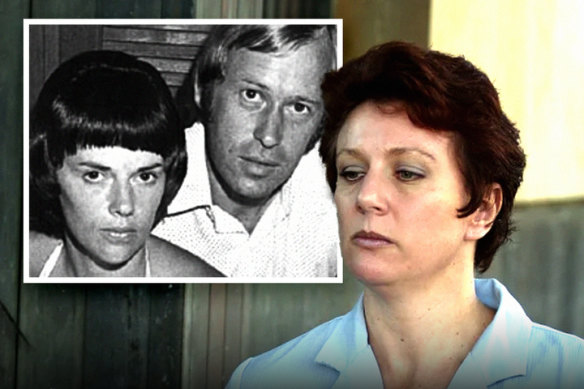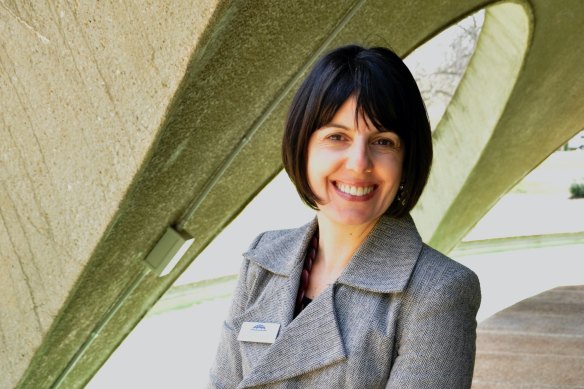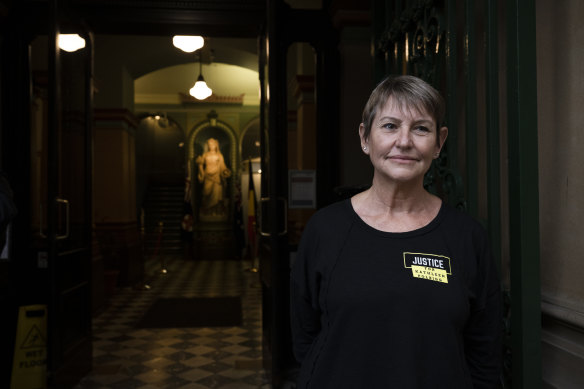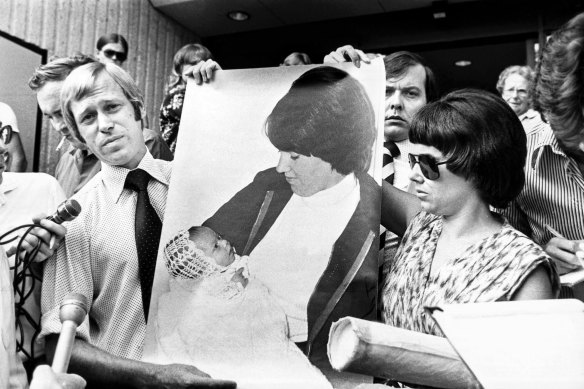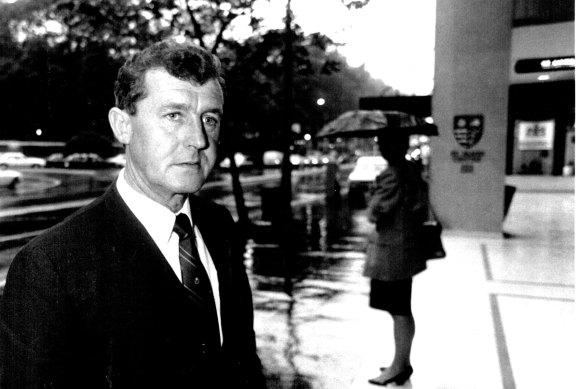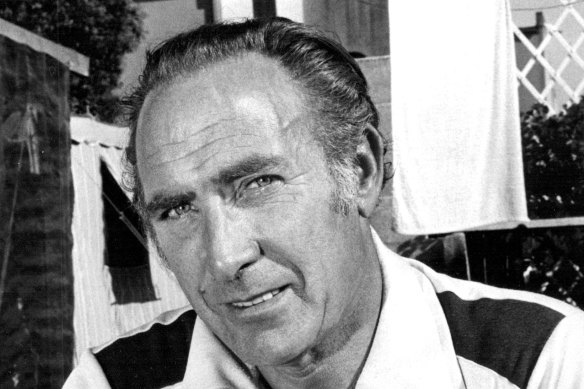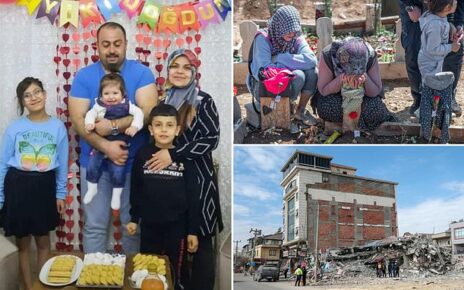A finding of reasonable doubt about Kathleen Folbigg’s convictions over the deaths of her four children would make the Lindy Chamberlain case “pale into insignificance”, says the head of a scientific body involved in the inquiry into the convictions.
Led by former NSW chief justice Tom Bathurst, KC, the inquiry concluded hearing evidence last month and will receive written submissions from affected parties such as Folbigg, the NSW Director of Public Prosecutions and others within weeks. He will hear closing submissions in Sydney on April 26.
Lindy and Michael Chamberlain, inset, and Kathleen Folbigg, who was convicted in 2003 of the murder of three of her children and the manslaughter of her firstborn son.
The Australian Academy of Science, a not-for-profit organisation of top scientists, sought and was granted leave to appear at the inquiry to make submissions on issues including appropriate experts to give evidence. It will not suggest to Bathurst what findings he should make.
Anna-Maria Arabia, chief executive of the academy, said the Folbigg case pointed to a need “to reconsider how science is considered in the legal system, and how we deal particularly with advances in science that are rapid”.
Some fellows of the academy have already backed calls for Folbigg’s immediate release from prison, including Professor Carola Garcia de Vinuesa, an immunologist and geneticist who gave evidence about a novel genetic variant Folbigg shared with her two daughters. It was not found in her sons.
The inquiry heard the variant, discovered after Folbigg’s 2003 trial, may cause cardiac arrhythmias – irregular heart rhythms – and sudden unexpected death.
Australian Academy of Science CEO Anna-Maria ArabiaCredit:Australian Academy of Science
If Bathurst finds reasonable doubt about Folbigg’s convictions, “it will make the Lindy Chamberlain case pale into insignificance”, Arabia said.
Chamberlain was convicted in October 1982 of murdering her infant daughter Azaria and spent three years in prison. She was pardoned in 1987 after a royal commission examined new evidence.
“I don’t think Folbigg has yet captured the public imagination in the same way, but if she’s released this year it’s 20 years [since her conviction],” Arabia said.
Folbigg, 55, is serving a minimum 25-year prison sentence after being convicted in 2003 of the murder of three of her children, Patrick, Sarah, and Laura, and the manslaughter of her first child, Caleb. Each died suddenly between 1989 and 1999, aged between 19 days and 19 months.
No expert before the inquiry has ruled out the possibility the genetic variant caused the deaths of Sarah or Laura Folbigg, but they were divided about whether it was likely.
Some expert evidence was heard about potential natural causes of death for Caleb and Patrick.
The inquiry also heard for the first time psychological and psychiatric evidence about the interpretation of Folbigg’s diaries – a key plank of the prosecution’s circumstantial case. No expert concluded the diaries contained clear admissions of criminal guilt.
Potential recommendations
If Bathurst finds reasonable doubt, he may refer the case to the Court of Criminal Appeal to consider quashing Folbigg’s convictions. Previous cases suggest he also has the power to recommend a pardon, which could expedite her release from prison.
A new review body
Arabia said the case presented a compelling argument for NSW and other jurisdictions to set up independent post-conviction review bodies to investigate potential miscarriages of justice, modelled on the UK Criminal Cases Review Commission.
The CCRC investigates criminal cases post appeals. It may refer a case for a fresh appeal where new evidence has emerged. New Zealand established a CCRC in 2020 and Canada is set to follow suit.
“This is exactly what’s happened with the Folbigg case, where … there’s new genetic evidence and information that needs to be brought before the courts,” Arabia said.
Folbigg’s childhood friend Tracy Chapman said that “sometimes the system doesn’t work, and we need mechanisms like the Criminal Cases Review Commission” to examine cases at arm’s length.
Kathleen Folbigg’s childhood friend Tracy Chapman outside the inquiry in February.Credit:Louise Kennerley
Chapman believed the establishment of such a body would be the legacy of the Folbigg case.
“We don’t want this struggle for nothing. It’s not an overthrow [of the system]; it’s an improvement. Both of us feel very passionate about it,” Chapman said.
Under the NSW system, people who believe they have been wrongly convicted but have lost appeals may petition the Governor for a review or pardon, or apply to the Supreme Court for an inquiry.
The Governor acts on advice from the Attorney-General and may direct an inquiry be set up, as occurred in the Folbigg case following a May 2021 petition for a pardon. Signatories to the petition included the then-president of the Academy of Science, Professor John Shine.
Scientific evidence has played a key role in high-profile inquiries into convictions in Australia.
The Chamberlain case
The jury in Lindy Chamberlain’s trial over the 1980 death of her nine-week-old daughter Azaria, who disappeared during a camping trip at Uluru, heard evidence suggesting arterial blood was found in the Chamberlains’ car. A royal commission concluded in 1987 the substance was “sound deadening material” commonly found in cars.
Chamberlain, who had been jailed for murder in 1982, was released in 1986 after Azaria’s jacket – a key piece of evidence – was found at Uluru.
Lindy and Michael Chamberlain in February 1981 with a photo of their daughter Azaria after the first inquest into her death, which found she was taken by a dingo.Credit:Russell McPhedran
The royal commission subsequently concluded that a trial judge hearing the same evidence as was before the royal commission “would have been obliged to direct the jury to acquit” Lindy and her then-husband Michael, who had been convicted as an accessory.
The Chamberlains were pardoned in 1987 and their convictions quashed in 1988. They received $1.3 million in compensation in 1992. A fourth inquest in 2012 reached the same finding as the first: Azaria had died “as the result of being attacked and taken by a dingo”.
Douglas Rendell
Douglas Harry Rendell, convicted in 1980 of the shooting murder of his partner Yvonne Kendall, was pardoned in July 1989 after an inquiry concluded his conviction was unsafe.
The inquiry heard Rendell’s trial had not heard crucial ballistics evidence, available at the time, that a rifle produced by Rendell’s partner was capable of discharging accidentally, as he maintained had occurred. “The withholding of that information may well have affected the outcome of the trial,” the inquiry found. He received an ex-gratia payment of $100,000 from the NSW government.
An inquiry found Douglas Harry Rendell’s conviction over the death of his partner was unsafe.Credit:Fairfax Media
Alexander McLeod-Lindsay
Alexander McLeod-Lindsay spent nine years in prison after being convicted in 1965 of the attempted murder of his then-wife, Pamela, who was found bashed in their home. She did not accuse him of the attack.
Expert evidence about bloodstains on McLeod-Lindsay’s jacket, allegedly showing “impact spatter”, was central to the prosecution case. A second inquiry in 1991 heard evidence the blood was clotted and may have transferred onto his jacket when he tried to help his wife.
Alexander McLeod-Lindsay’s conviction in 1965 for the attempted murder of his then-wife was quashed in 1994.Credit:John Nobley
He was pardoned in 1992 and his conviction was formally quashed in 1994. He received $700,000 in compensation.
The Morning Edition newsletter is our guide to the day’s most important and interesting stories, analysis and insights. Sign up here.
Most Viewed in National
From our partners
Source: Read Full Article

